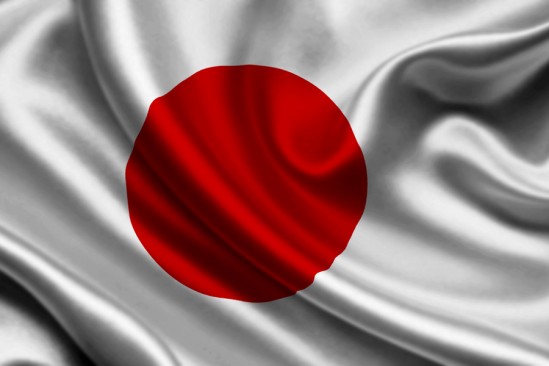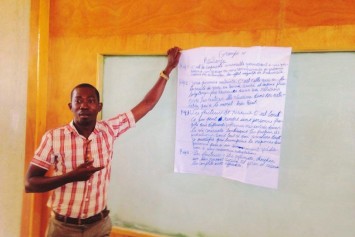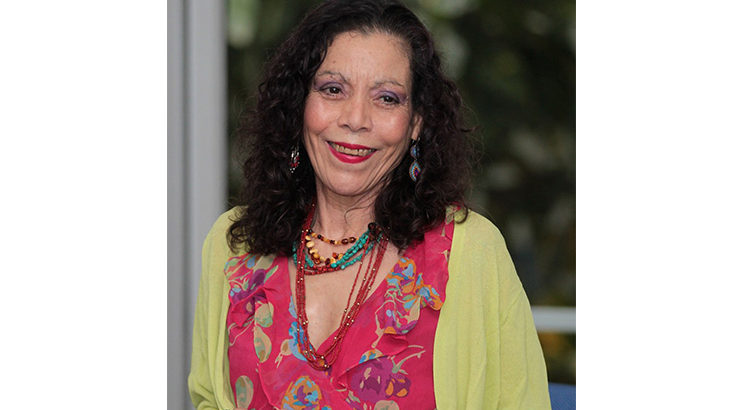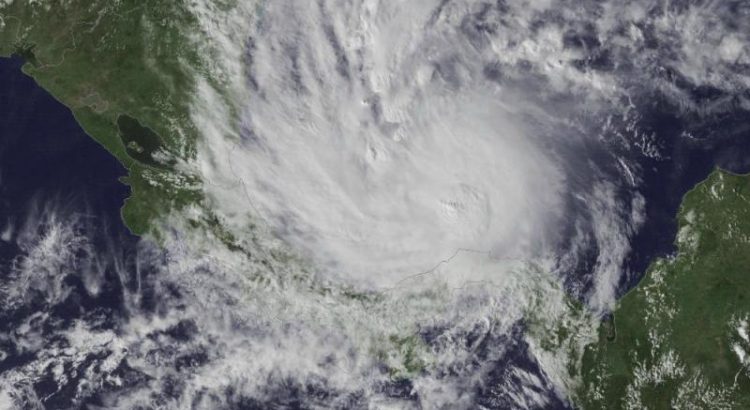Japón/Marzo de 2017/Fuente: The Japan News
RESUMEN: Seis años han pasado desde el Gran Terremoto en el Este de Japón. Con el terremoto de Kumamoto el año pasado y las crecientes preocupaciones por los terremotos que se originaron en el Nankai Trough y directamente en Tokio, se requiere una mejor educación para la gestión de desastres. ¿Cómo están pasando los supervivientes del terremoto sus historias, y cómo se nutren los recursos humanos? Examinamos el estado de estos esfuerzos de educación en varias áreas de Japón. Esta es la primera entrega de la serie. «¿Entiendes esta parte?» Un estudiante de primer año en el Departamento de Ciencias de Desastres de la Escuela Preparatoria Prefectural Tagajo de Miyagi en Tagajo, en la prefectura, estaba tratando de resolver un problema estadístico sobre las temperaturas el 20 de febrero.
Six years have passed since the Great East Japan Earthquake. With the Kumamoto Earthquake last year, and rising concerns about massive quakes originating in the Nankai Trough and directly under Tokyo, better disaster management education is being called for. How are earthquake survivors passing on their stories, and how are human resources being nurtured? We looked into the status of such education efforts in various areas of Japan. This is the first installment in the series.
“Do you understand this part?” A first-year student in the Disaster Science Department at Miyagi Prefectural Tagajo High School in Tagajo in the prefecture was trying to solve a statistical problem about temperatures on Feb. 20.
The students were studying a subject called “practical statistics.” Unique to this department, the goal of this particular class is to use data on weather and other disaster-related phenomena to develop the analytical skills necessary for disaster research.
The department was established last April as a specialized disaster management education course. With 36 students, it is the second course of its kind, following Hyogo Prefectural Maiko High School in Kobe, which started its Environment and Disaster Mitigation Course in 2002.
One third of Tagajo was submerged in the tsunami following the Great East Japan Earthquake, and 188 people perished.
“We want to nurture people who will pass on the lessons of the Great East Japan Earthquake to the next generation and contribute to town planning, education, medicine and disaster relief as researchers and technicians,” said Principal Hiroshi Koizumi.
While Maiko High School’s disaster mitigation course focuses on the humane, with many of its graduates becoming firefighters, Tagajo’s Disaster Science Department puts weight on science.
General curriculum content is studied from the perspective of disaster preparedness and reduction. Classes that feature unique teaching materials include “Natural Science and Disasters,” which covers biology, physics, earth science and disasters, and “Society and Disasters,” a course that deals with past disasters.
One student of the inaugural class was in his fourth year of elementary school when the Great East Japan Earthquake hit. Yota Chiba, 16, of Tagajo, saw his father rescuing people from cars that had been carried away by the tsunami.
He said he took the course because “I want to gain the knowledge and skills needed in a disaster, and in the future, I want to deal with disasters and help people.”
Many of his classmates have clear career goals such as becoming a nurse, helicopter pilot or local government official.
The high school is running a pilot program to spread disaster preparedness in the prefecture and beyond. It conducts many special classes, experiments and practical training sessions in collaboration with universities and the Japan Aerospace Exploration Agency.
This fiscal year, the school invited a university professor to teach students about wave gauges using the global positioning system used to observe tsunamis and to discuss policies aimed at preventing tsunami disasters like that of the Great East Japan Earthquake from happening again.
There was also a class in which students heard the story of a woman from Ishinomaki, Miyagi Prefecture, who suffered in the tsunami in her last month of pregnancy but still managed to give birth. Arisa Oba, 16, recalls, “I felt strongly that I wanted to work in the medical field,” after hearing the story.
Students from 11 schools, including Maiko High School, planned to gather at Tagajo High School to share their research results on their first “Great East Japan Earthquake Memorial Day.”
Organized mainly by student council members such as Chiba and Oba, the workshop features the theme: “If I could go back to 24 hours before the earthquake.”
Said Oba: “I don’t want to forget my sad memories of the earthquake six years ago, but to remember the things I thought and experienced at that time and use them to prepare for the next disaster.”
Putting experience to use
The Environment and Disaster Mitigation Course at Hyogo prefectural Maiko High School was established to pass on the lessons learned from the Great Hanshin Earthquake. Many graduates of the course now work in disaster management on the government level and at universities. Nodoka Kawata, 29, is one of them. She works with Sakura Net, a nonprofit organization based in Nishinomiya, Hyogo Prefecture, and promotes disaster management education.
The Great Hanshin Earthquake occurred when Kawata was in her first year of elementary school. On her way to her grandparents’ home in Nagata Ward, Kobe, she saw many buildings leaning. It seemed like she was seeing the city for the first time.
In the winter of her third year of junior high school, she saw an article written by a student who had lost family members in the earthquake and was coming to terms with it through the disaster mitigation course at Maiko High School. This made Kawata decide to take the course.
“If we had prepared, we could have saved lives,” were words by an outside lecturer that shocked her. She had long thought nothing could’ve been done to prevent the loss of lives in a large earthquake, but that was not the case.
Feeling that there was hope in disaster management, she joined Sakura Net in 2010 after graduating from university.
In the Great East Japan Earthquake and last April’s Kumamoto Earthquake, the organization supported the affected areas. They learned that injuries and loss of life were lower in areas conducting disaster management education, such as Kamaishi, Iwate Prefecture. Said Kawata: “I was reminded of the importance of such education. I want to create an environment where children can learn how to prepare for disasters.”
On the other hand, now that 22 years have passed since the Great Hanshin Earthquake, students in the disaster mitigation course are of the generation with no disaster experience. Besides listening to the stories of victims and supporters, the students also visit elementary schools to talk about their activities to support disaster-affected areas. Many children who hear these talks later end up taking the course.
Said instructor Shigeru Wada, 58, head of the course: “Now, instead of speaking directly about personal disaster experiences, students are listening to the stories of victims and passing those on, along with their own thoughts. But the baton is still being passed from student to student.”
Fuente: http://www.the-japan-news.com/news/article/0003591063


















 Users Today : 217
Users Today : 217 Total Users : 35459812
Total Users : 35459812 Views Today : 379
Views Today : 379 Total views : 3418351
Total views : 3418351